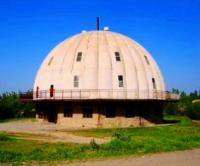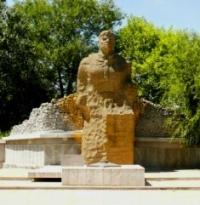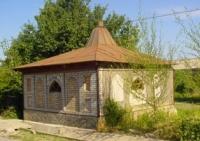You are here
Sairam village.




Ancient monuments of Sairam.
“If an ancient man saw planes two thousand years ago
He would've thought they were birds
Or angels from another world
Or messengers from other planets”
Dejan Stojanovic.
Religious sights Sairam.
In the historical chronicles of the IX - Xth centuries Isfidjab was called a first class military fortress. During its one thousand-year-old history Isfidjab-Sairam more than once faced enemy and each time it fought bravely, stood to the last man.
Chinese travelle Xuan-Zang (629) mention Sairam in his journal as the "town on the white river". Sail am has an according abundance ofsacrci tombs and underground tern pies which are the pride of it citizens. The legendary Mount Kazygurt in the spurs of the Таlas Alatau was, to old tradition, one of the place where Noah's Ark rested during the Flood.
The Museum of local history, Sairam village, ancient mausoleums and mosques (X c.) Mausoleum of Arstan Bab (spiritual teacher of Yassawi). Ruins of Otrar, the ancient city of the Great Silk Road. Now there are remains of the past fame of White town (translation of Sairam) such as ruins of walls, bastions, the minaret of the destroyed Bazalakata mosque (XII c.) with a spiral staircase and a half-destroyed entrance to the basement leading no one knows where; Karashash-Ana mausoleum (XIX c.), Abdl-Aziz-Bab (XVIII c.).
The city of Isfidzhab, mentioned for the first time in the VI Century and later renamed Sayram. was once a green oasis full of gardens and farmlands and a centre of settled agriculture, manufacturing and trade. It was home to a large community of Nestorians, but in 766 AD Muslim forces swept in from the west, conquering and converting its citizens, and killing 10,000 Nestorians in the process.
During the XI Century, the scholar Mahmud of Kashgar reported on the city and was impressed by its white mansions. But following its sacking by Genghis Khan in the XIII Century, its significance declined, and, after two attacks by the Zhungars in the XVII and XVIII centuries, it finally fell into decay.
A rectangular fortified area remains and has been preserved, stretching over some 500 - 550 metres, as well as some of the walls and the double earthworks that surrounded the city. A few important historical structures can still be visited today, thanks to partial restoration work.
They include the mausoleums of Ibrahim Ata and Abdel Aziz, who was the colour-bearer of the Muslim forces who conquered the city, and whose three-domed tomb was built on the orders of Tamerlane. Sayram was the birthplace of the great prophet and Sufi teacher Khoja Ahmed Yasawi, and the tomb of his mother Karashash can be seen here.
An architectural highlight is the 15-metre-high Hisr Paygambar Minaret, part of the X century Kyzyr mosque. There is also a Museum of History, which contains an old, richly illustrated Koran and stone support from the original Friday mosque.
The Koran dates back 200 years, but the stone support is believed to be from that same original mosque, though it has not been carbon dated to support that theory. Most of the historical sites lie at the edge of the town, which is 20 kilometres east of Shymkent, along the road to Lenger.
Sayram has a high population density of Uzbeks, and there is relatively little Russian influence here - it has a very Central Asian feel to it. and is strongly Islamic, with the Muslim call to prayers echoing out over the rooftops more noticeably than in larger cities like Shymkent.
Authority:
The guidebook across Kazakhstan . Authors Dagmar Schreiber and Jeremy Tredinnick. Publishing house "Odyssey".2010.
Photos
Alexander Petrov.







